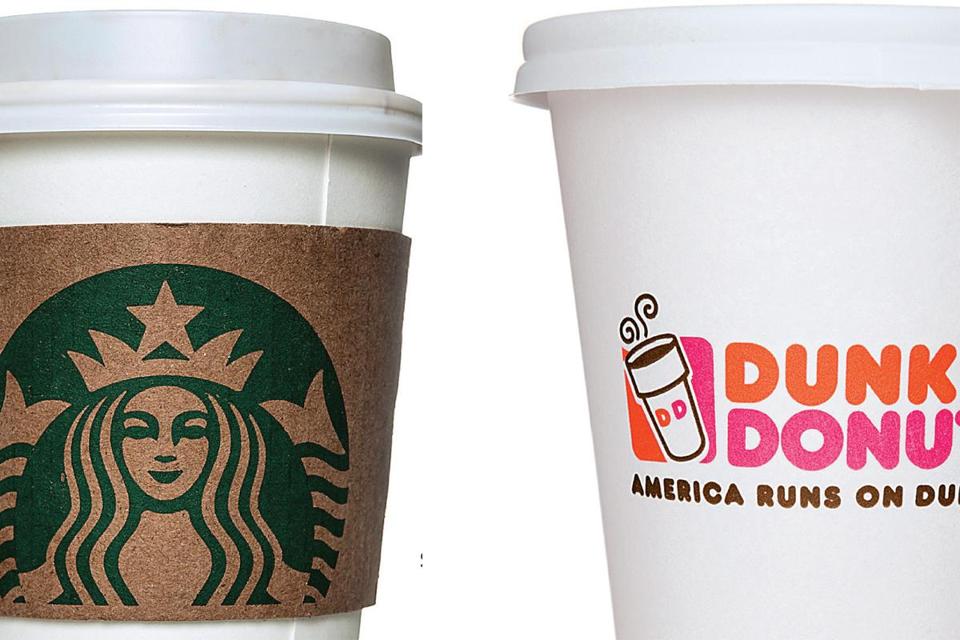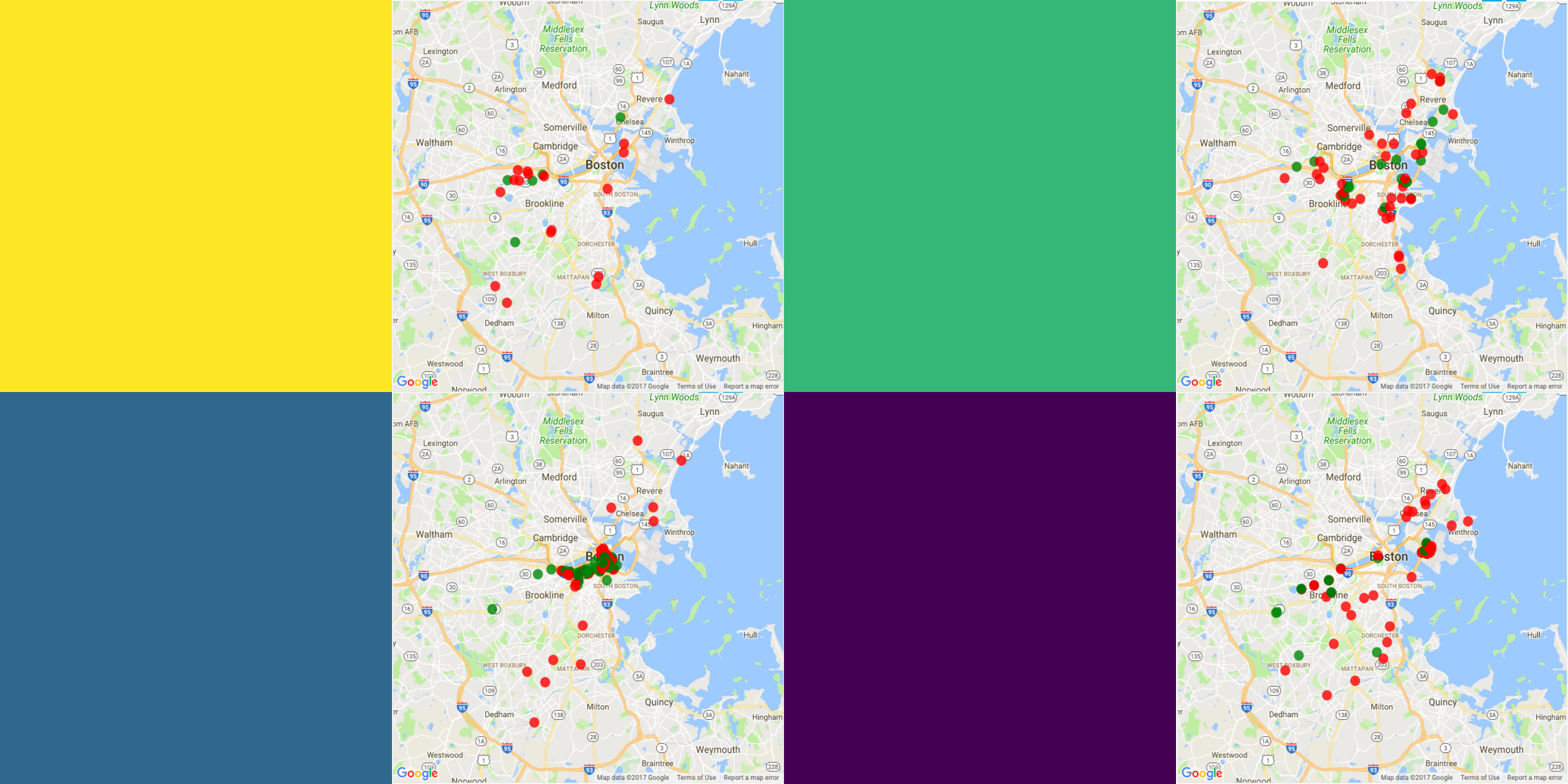
"How many coffee shops in Boston?"
Hmmm...well, suppose there are 1 million people in Boston. Then... NOPE. Stop it. This series is nothing about strategy for any brain teaser. This is an analysis about two major coffeehouse chains, Starbucks vs Dunkin' Donuts, "corporate + license" vs pure franchise, in Boston area. I will walk you through their distribution and strategies of choosing a location (if consistent). This series is roughly separated by following parts.
- Part 0: Get the data prepared!
- Part 1: A glance at locations
- Part 2: Who are Dunkin's and Starbucks' favorite neighbors? - Empirical Bayes Analysis
- Part 3: What can we expect around a coffeehouse? - Network Visualization
- Summary
What can we expect around a coffeehouse?
In this post, you would see how a community, where a coffeehouse locates, is like. You would find out what are the major components for each community. You can also find my code and a more detailed analysis here. Enjoy!
Quick review of datasets:
- nearby: The amount of merchant within 1000 meters (0.6 mile) for a given store
Community VS Neighborhood
To differentiate from the last post, this post would talk about community rather than neighborhood. I defined community as a larger area which contains multiple neighborhoods with similar components. I would focus less on comparing Starbucks' neighborhood with Dunkin's in this post since they might run business in the same community.
How many kinds of communities in Boston area?
Since we are talking about the community, you might wonder if we can segment areas within Boston into some communities basing on merchant components. Here is an idea: take each coffeehouse as a probe and use the number of merchants to describe a specific area. Because of the saturation of coffeehouse in Boston area, these areas could have a good coverage of Boston area. Here is the network of coffeehouses, where each color represents a community detected by the Louvain method. Feel free to explore geographic locations of any group by selecting coffeehouse below. (Tips: Either clicking or dragging works. Press 'shift' to keep previous selections.)
Patterns of communities

Yellow
Location: Major areas of Allston and Brighton, plus lower Dorchester and parts of Roxbury
Characteristics: This community is featured by the highest concentration of transit station, cheap restaurants, school, car repair stores, and home goods stores. This is one of the typical residential areas in Boston.
Green
Location: Major areas of Fenway, South Boston, East Boston(excluding Airport), Charlestown, plus some parts of West End, Chelsea and Revere
Characteristics: This community is featured by the highest concentration of hospital, physiotherapy clinic, and university. Besides, it also has a relatively high concentration of dental clinic, transit station, and cheap restaurant. It might be because of major areas for university and medical schools within Boston area.
Blue
Location: Major areas of Downtown, Back Bay and some malls within residential area
Characteristics: This community is featured by the highest concentration of government office, cafe, atm, accounting firm, bank, and beauty salons. However, it has an obviously low concentration of car repair stores, transit station, and cheap restaurant. It is the major commercial area within Boston.
Purple
Location: Major areas of Brookline, Dorchester, Airport, Chelsea, Revere, Winthrop, plus some parts of South End, Mattapan and Roxbury
Characteristics: This community is featured by the highest concentration of dental clinics. And, it also has a high concentration of transit station, school and cheap restaurant. Except Airport, most locations cover typical residential area and this community is quite similar to the community Yellow. However, it has a higher concentration of government office and beauty salon shop but much lower concentration of car repair store. Community Purple covers most commercial streets within residential area. It could be regarded as second-tier of commercial area. And it is reasonable to group Airport into this commercial-ish area since its lack of business service institutions.
Once again, Starbucks liked commercial areas A LOT
Nearly half of Starbucks' stores are in community Blue, which is the major commercial area. This number is twice of the total number of stores within community Yellow and Purple. In the meantime, Dunkin' has a slightly higher number of stores in community Yellow and Purple than in community Blue. Besides, there is no big difference between Starbucks and Dunkin' within community Green.
Conclusion
Boston is unique by the combination of academy, healthcare and commerce. Though Starbucks and Dunkin' do have different strategies in selecting sites, what we can expect to find around a coffeehouse depends on the specific community where the coffeehouse locates.
What's next?
There will be a brief summary of this series coming up soon. The summary would contain major findings of each part. It would be easier to know what I did in this series.